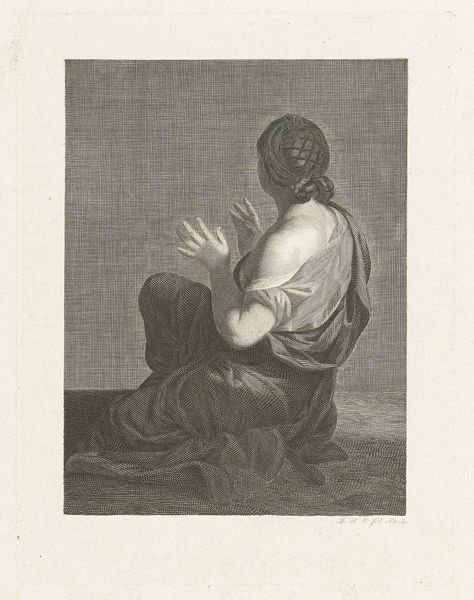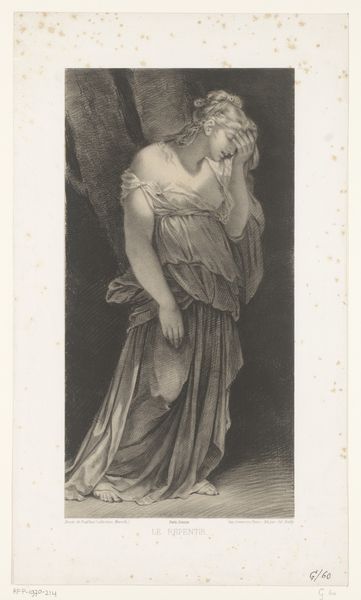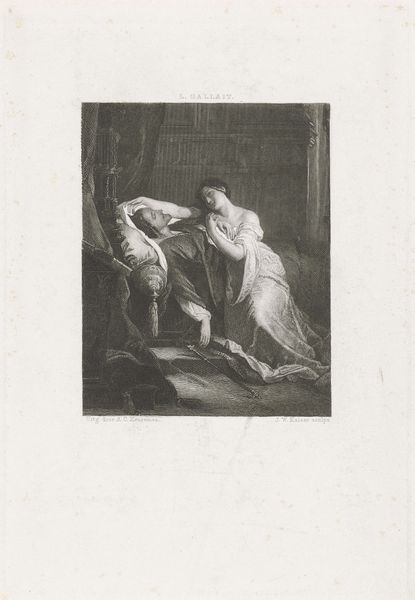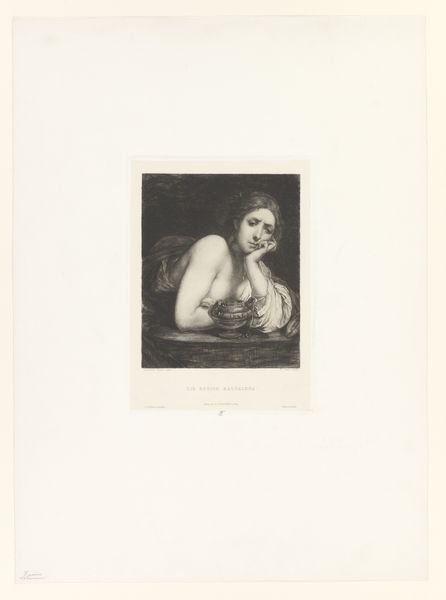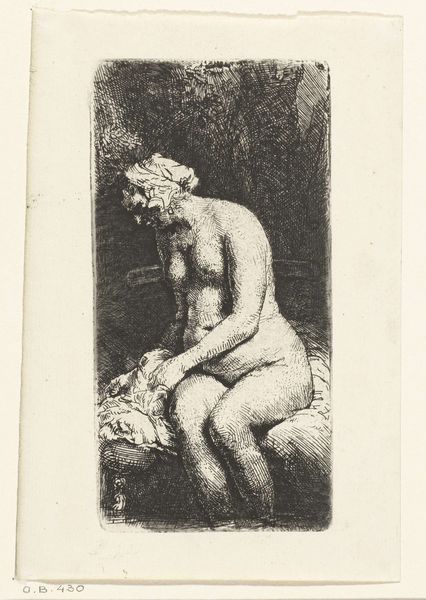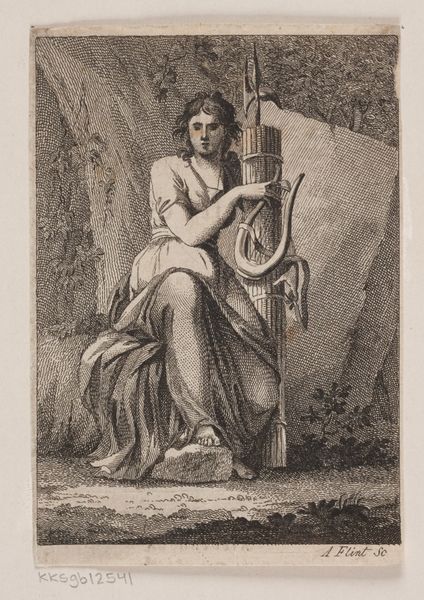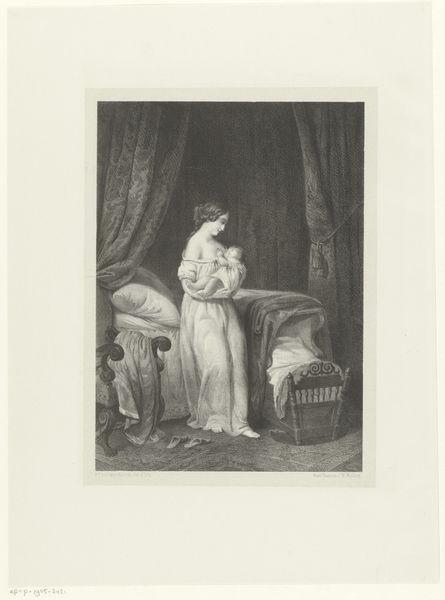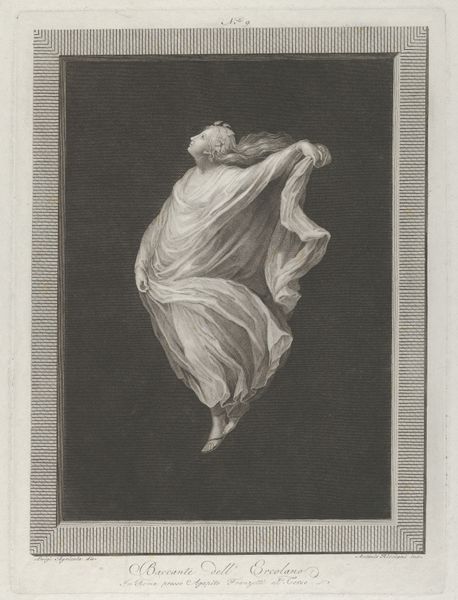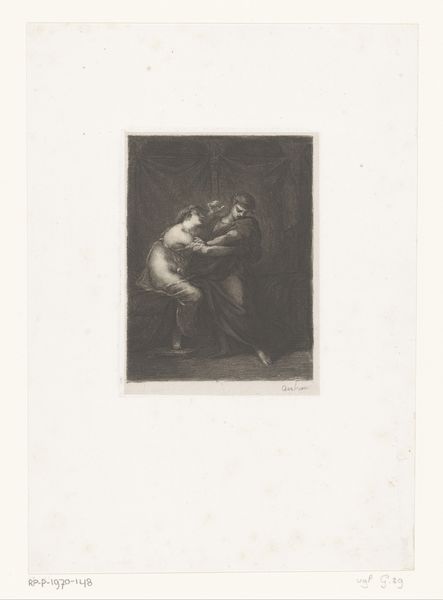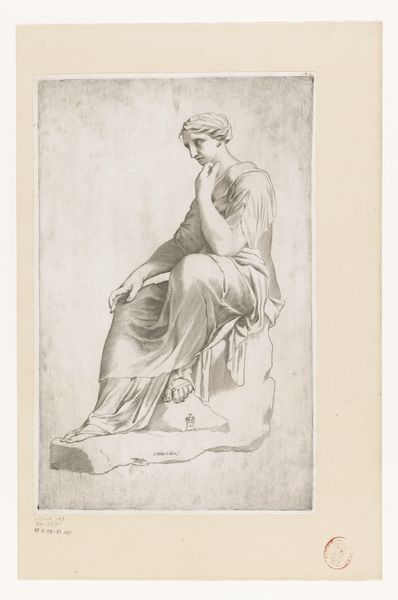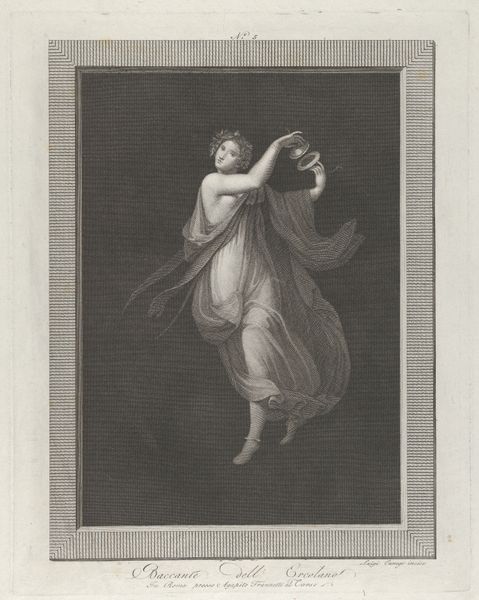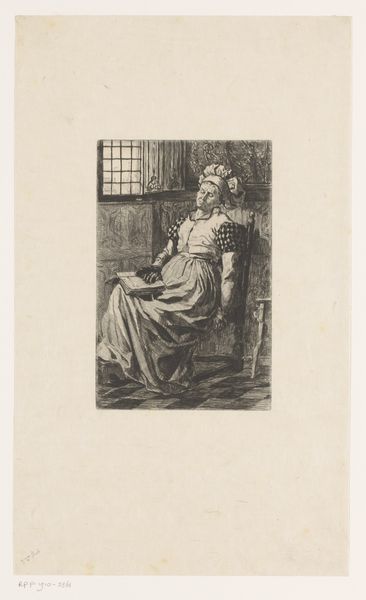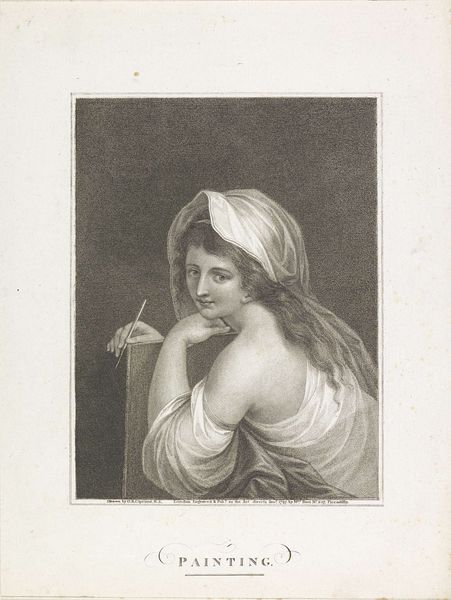
print, engraving
portrait
neoclacissism
old engraving style
figuration
genre-painting
engraving
Dimensions: 129 mm (height) x 86 mm (width) (plademaal)
Editor: This is "En Kvinde med Harpe" by Oluf Olufsen Bagge, likely made sometime between 1780 and 1836. It’s an engraving, and the figure of a woman with a harp is quite striking. Her posture seems to convey a sense of melancholy. What do you see in this piece, considering its historical context? Curator: It's interesting you picked up on the melancholy. Looking at this through a historical lens, it is impossible to ignore the rise of Neoclassicism at the time. This style often looked to antiquity, drawing upon idealized forms and stoic narratives. Is this woman in distress or in thoughtful contemplation? Her clothing definitely alludes to Greco-Roman sculpture and what did this choice evoke for viewers at that time? Editor: I hadn't considered that link to sculpture. Her dress and the harp itself certainly feel timeless, but also perhaps set apart from the everyday. Were these types of prints intended for a specific audience, shaping the reception of the image? Curator: Absolutely. Prints like this often circulated amongst the burgeoning middle class. They provided access to art and culture, disseminating particular visions of beauty, virtue, and even acceptable female roles in society. This idealized woman with her harp, while seemingly passive, may have reinforced notions of feminine grace and domestic artistry deemed desirable during that era. Editor: So the print becomes a sort of cultural artifact itself, not just a representation of an aesthetic ideal. Curator: Precisely. And it reflects how the power structures of the time–think of gender roles, class distinctions, artistic conventions—influenced what was created and consumed. This challenges us to question whose stories were being told and whose were being left out. Editor: That really makes me reconsider the artwork. Thanks to our conversation, I definitely see it now through a new set of eyes. Curator: I'm glad to share the insights! It’s in considering the politics of imagery where a richer understanding develops.
Comments
No comments
Be the first to comment and join the conversation on the ultimate creative platform.
